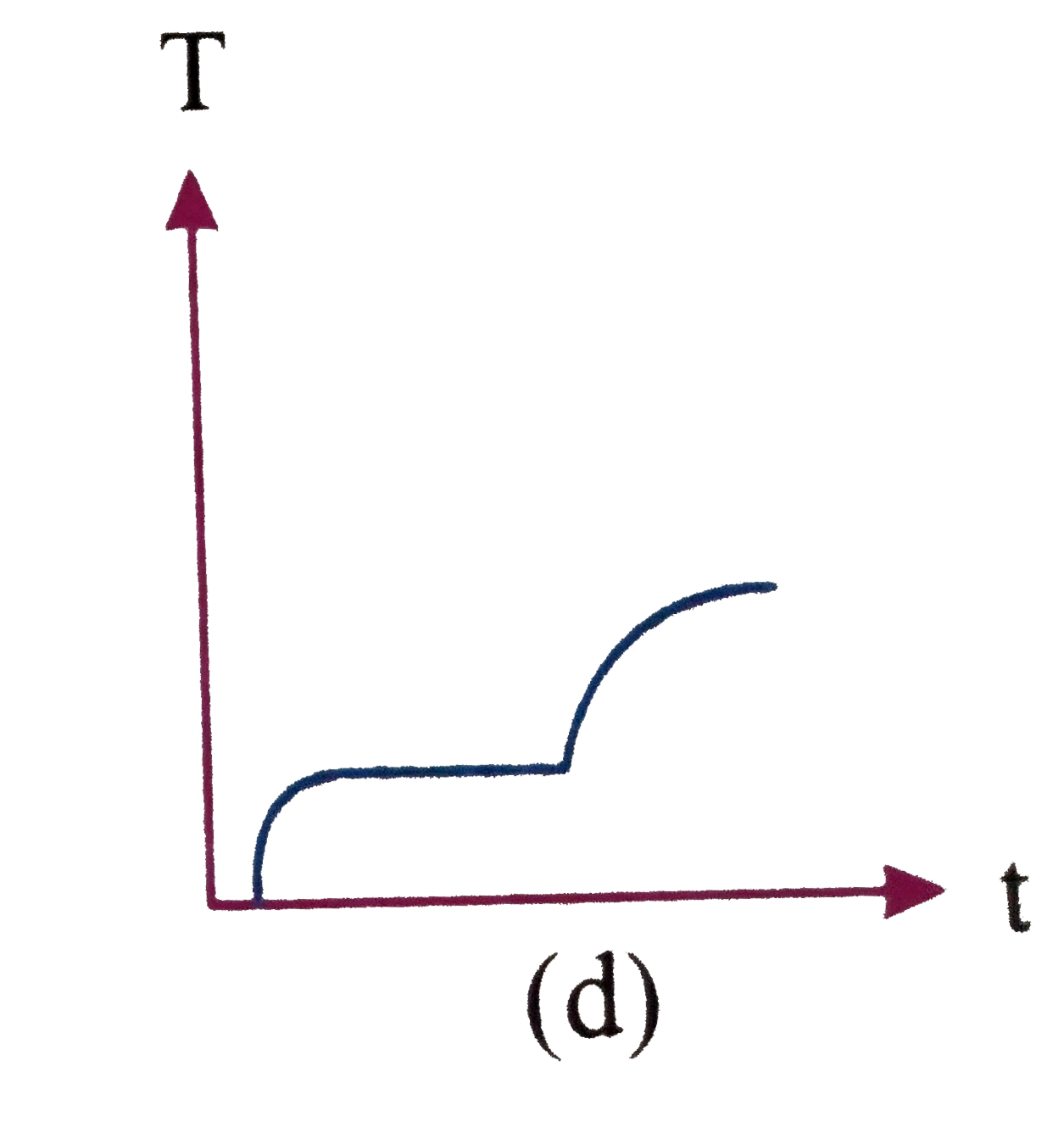Heat energy can be supplied to a substance without increasing its temperature.
The correct Answer is:True
Step-by-Step Solution:
1. Understanding Heat Energy and Temperature:
- Heat energy can be added to a substance without causing a change in its temperature. This phenomenon occurs during phase changes.
Hint: Remember that temperature measures the average kinetic energy of particles, while heat energy is the total energy transferred.
2. Phase Changes:
- When a substance undergoes a phase change, such as melting or boiling, the heat energy supplied is used to change the state of the substance rather than increasing its temperature.
- For example, when ice (solid) is heated, it eventually reaches 0°C (the melting point) and begins to melt into water (liquid) without a temperature increase.
Hint: Identify the specific temperatures at which phase changes occur for different substances.
3. Melting of Ice:
- As heat is supplied to ice, its temperature rises from below 0°C to 0°C. At 0°C, the ice starts to melt. During this melting process, the temperature remains constant at 0°C even though heat is still being added.
Hint: Consider the energy required for melting (latent heat of fusion) and how it affects temperature.
4. Boiling of Water:
- After all the ice has melted into water, if heat continues to be supplied, the temperature of the water will start to increase until it reaches 100°C (the boiling point). At this point, the water will begin to boil, and again, the temperature will remain constant during the boiling process.
Hint: Recall the concept of latent heat of vaporization for the transition from liquid to gas.
5. Conclusion:
- In summary, heat energy can be supplied to a substance without increasing its temperature during phase changes (solid to liquid, liquid to gas). The energy goes into changing the state of the substance rather than raising its temperature.
Hint: Reflect on how this principle applies to everyday experiences, such as ice melting or water boiling.
---
- Heat energy can be added to a substance without causing a change in its temperature. This phenomenon occurs during phase changes.
- When a substance undergoes a phase change, such as melting or boiling, the heat energy supplied is used to change the state of the substance rather than increasing its temperature.
- For example, when ice (solid) is heated, it eventually reaches 0°C (the melting point) and begins to melt into water (liquid) without a temperature increase.
- As heat is supplied to ice, its temperature rises from below 0°C to 0°C. At 0°C, the ice starts to melt. During this melting process, the temperature remains constant at 0°C even though heat is still being added.
- After all the ice has melted into water, if heat continues to be supplied, the temperature of the water will start to increase until it reaches 100°C (the boiling point). At this point, the water will begin to boil, and again, the temperature will remain constant during the boiling process.
- In summary, heat energy can be supplied to a substance without increasing its temperature during phase changes (solid to liquid, liquid to gas). The energy goes into changing the state of the substance rather than raising its temperature.
Similar Questions
Knowledge Check
If specific heat capacity of a substance in solid and liquid is proportional to the temperature of substance, then temperature Vs time plot for the substance is best present by [Assume heat is supplied to substance at constant rate and initial temperature is less than melthing pint of substance.
A B
B C
C D
D
The heat absorbed by a substance decreases with increases in temperature
View SolutionCan heat be added to a substance without causing the temperature of the body of rise? If so does this contradict the concept of heat as energy in the process of transfer because of temperature differece?
View SolutionThe heat absorbed by a substance decreases with increases in temperature
View SolutionState true or false.
When heat is supplied to a substance, it always raises the temperature of substance.
View SolutionEven though heat is supplied to boiling water, there is no increase in its temperature.
View SolutionEven though heat is supplied to boiling water, there is no increase in its temperature.
View SolutionThe sream poinr and rht ice point of a mercuty thermometer are marked as 800and200. What will be the temperature in centigrade mercury scale when this thermometer reads 320?
View Solution
